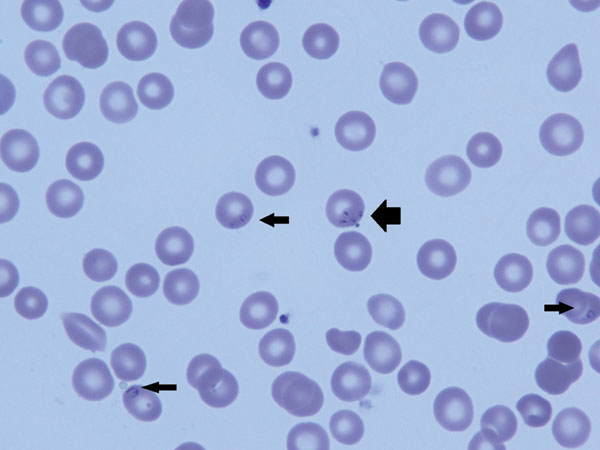Volume 18, Number 8—August 2012
Dispatch
Vertical Transmission of Babesia microti, United States
Figure

Figure. . Peripheral blood smear of 6-week-old infant with suspected congenital babesiosis. Thin arrows indicate Babesia spp. parasites; thick arrow shows the classic tetrad formation or Maltese cross.
1Current affiliation: New York University School of Medicine, New York, New York, USA.
Page created: July 23, 2012
Page updated: July 23, 2012
Page reviewed: July 23, 2012
The conclusions, findings, and opinions expressed by authors contributing to this journal do not necessarily reflect the official position of the U.S. Department of Health and Human Services, the Public Health Service, the Centers for Disease Control and Prevention, or the authors' affiliated institutions. Use of trade names is for identification only and does not imply endorsement by any of the groups named above.